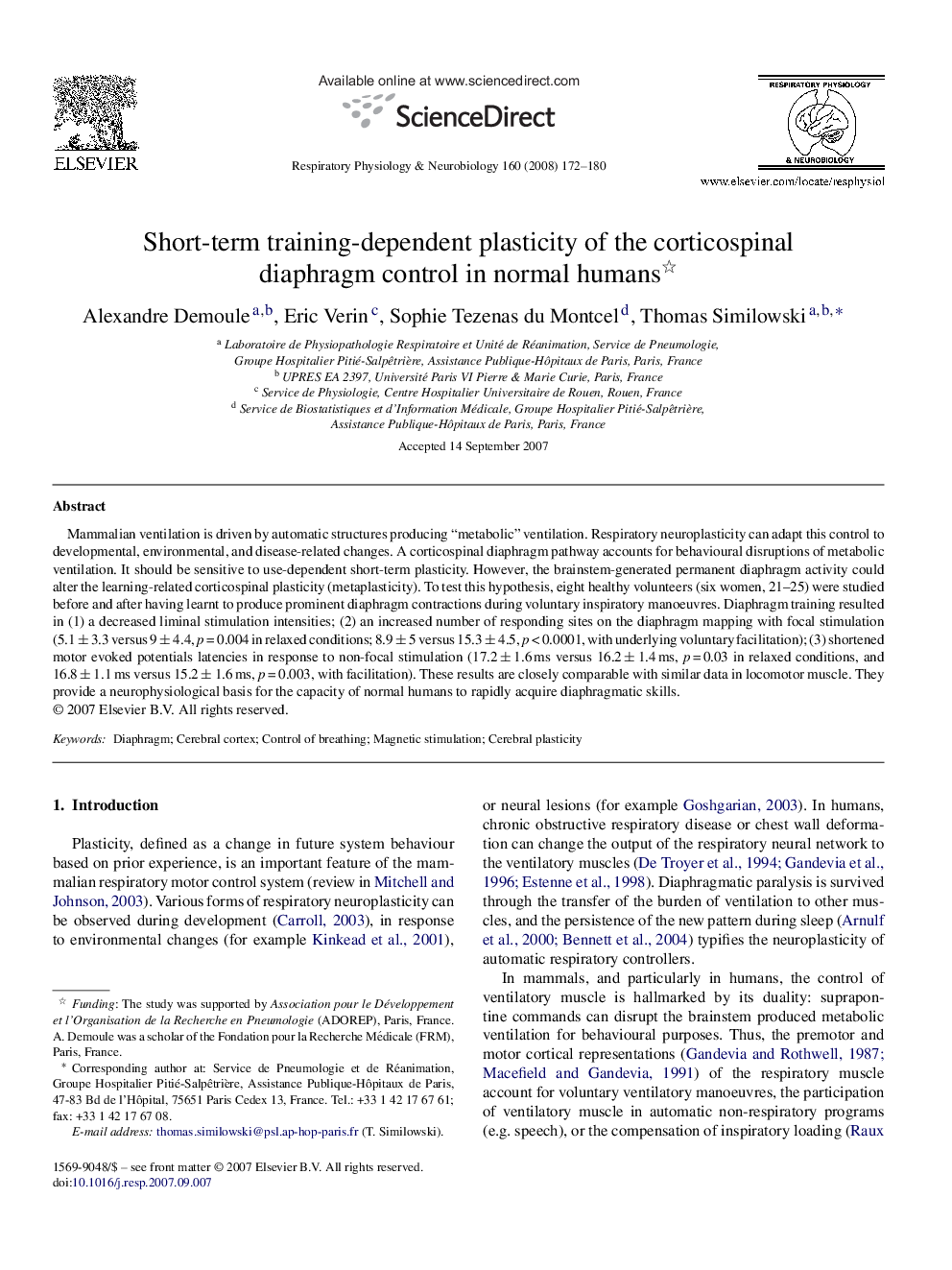| Article ID | Journal | Published Year | Pages | File Type |
|---|---|---|---|---|
| 2848199 | Respiratory Physiology & Neurobiology | 2008 | 9 Pages |
Mammalian ventilation is driven by automatic structures producing “metabolic” ventilation. Respiratory neuroplasticity can adapt this control to developmental, environmental, and disease-related changes. A corticospinal diaphragm pathway accounts for behavioural disruptions of metabolic ventilation. It should be sensitive to use-dependent short-term plasticity. However, the brainstem-generated permanent diaphragm activity could alter the learning-related corticospinal plasticity (metaplasticity). To test this hypothesis, eight healthy volunteers (six women, 21–25) were studied before and after having learnt to produce prominent diaphragm contractions during voluntary inspiratory manoeuvres. Diaphragm training resulted in (1) a decreased liminal stimulation intensities; (2) an increased number of responding sites on the diaphragm mapping with focal stimulation (5.1 ± 3.3 versus 9 ± 4.4, p = 0.004 in relaxed conditions; 8.9 ± 5 versus 15.3 ± 4.5, p < 0.0001, with underlying voluntary facilitation); (3) shortened motor evoked potentials latencies in response to non-focal stimulation (17.2 ± 1.6 ms versus 16.2 ± 1.4 ms, p = 0.03 in relaxed conditions, and 16.8 ± 1.1 ms versus 15.2 ± 1.6 ms, p = 0.003, with facilitation). These results are closely comparable with similar data in locomotor muscle. They provide a neurophysiological basis for the capacity of normal humans to rapidly acquire diaphragmatic skills.
